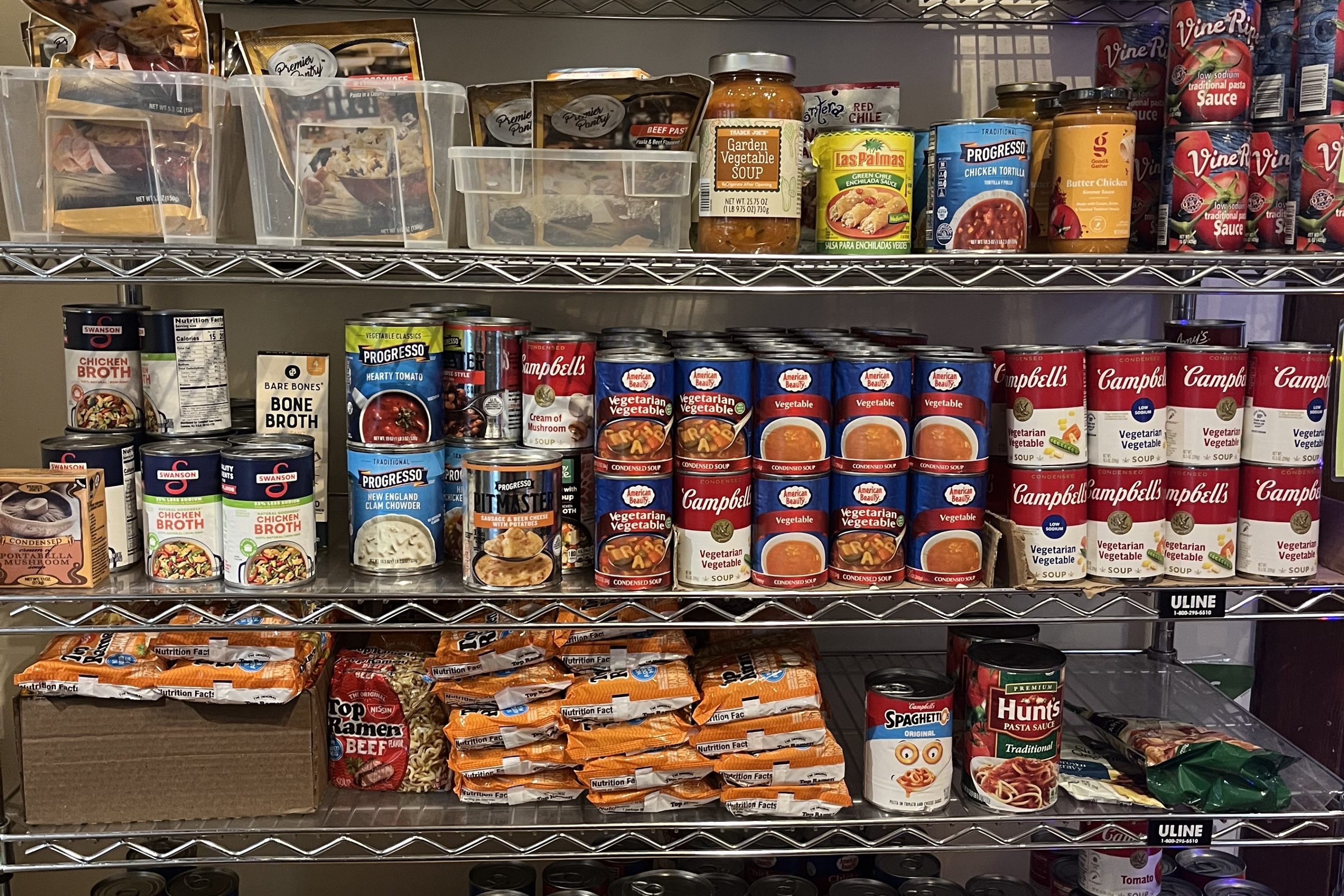Council Member-Elect Katie Cashman Fails to Denounce Hamas
I was surprised to read Ward 7 Council Member-elect Katie Cashman's statement on X, formerly Twitter, earlier this month about Israel and Palestine. Cashman fails to mention Hamas. There would be no “escalation of violence in Israel and Palestine” without the violation of a permanent ceasefire by Hamas on October 7.
Cashman tweeted: “Since October 7, we have witnessed a heartbreaking escalation of violence in Israel and Palestine ... My heart breaks for the Palestinian people experiencing genocide at the hand of Netanyahu's Israeli military, funded by our tax dollars and supported by our President. My heart also breaks for Jewish people holding immense pain around the events of October 7th and the aftermath. This genocide has further animated antisemitism and Islamophobia across our country, pushing our communities into division, fear, and uncertainty. Our collective heartbreak requires us to meaningfully call for peace. We are all connected: our humanity and liberation are bound together. I'm joining several elected leaders across Minnesota who are demanding a permanent ceasefire and divestment from the State of Israel. I invite other community leaders to use the power you have to call for peace and justice."
Calling the kidnapping, rape, and killing of Israelis, Americans and others by Hamas on Oct. 7 an “event” is a telling choice of words. The real enemy of both Palestinian and Israeli people is Hamas, yet nowhere in her statement does she denounce Hamas or its barbaric attack on innocents in Israel on Oct. 7; Hamas’ use of hospitals, schools and other population centers to shield its operations; or the ongoing violence perpetrated by Hamas on the Palestinian people.
She labels Israel’s effort to eradicate Hamas genocide yet ignores Hamas' stated goal — the elimination of Israel as a nation and the eradication of Christians and Jews from the region through carnage, displacement and terror. This sounds like genocide to me. Since the proliferation of fake news and alternative facts, it is important to note that Judaism preceded Islamism as a religion by centuries in the region. As such, this is the ancestral home of the Jews and the unceded land of the Jewish people.
Moreover, demanding “divestment from the State of Israel” reveals naiveté about the role Israel plays as the only democracy in the Middle East and the only state in the region that protects civil liberties like women’s and LGBTQ+ rights and whose citizens include Jews, Muslims and Christians.
This is not complicated. There are NOT good people on both sides. Hamas and its supporters are evil. Their open call for a globalized intifada is a call for the death of Israelis and Jews everywhere. Never again is now. I will not be silent, nor will I be silenced. What about you?
Now that Ms. Cashman will be working for the people of Minneapolis' 7th ward and not for the U.N., I hope she will show more understanding of matters closer to home such as public safety and investment in the Uptown commercial area than she does of those in the Middle East.
Dawn Erlandson | East Isles
Thank You
Hello all. This is George Roberts writing to thank you for your coverage of the North Minneapolis WHAT WE WANT show at Isles Bun & Coffee.
Judy Longbottom, one of your readers, alerted me to the article. In getting to that article, I perused much of your December issue. I am impressed with the depth and breadth of your coverage. I particularly enjoyed reading about Jeff Bengstrom.
At a time when newspapers are having trouble adapting to the digital world and its exigencies, your paper seems vibrant and expansive. My thanks and my congratulations to you all.
You may be interesting in knowing the article led Judy Longbottom to invite me to place a broadside in her UPS store in the coming months. A special thanks for that.
Please keep up the good work.
George Roberts | North Minneapolis
A Question for Mr. Murphy
I have a question for Mr. Murphy, who wrote the article to which I am responding, “Uptown’s Parking Fallacy.” Do you, Mr. Murphy, patronize the businesses on the south end of Hennepin, from 26th Street south to Black Walnut Bakery and Perennial Cycle?
The tone of your article was more of “Get with the program, you people!” than any attempt to justify the hardship to businesses that have already weathered the protests and destruction farther east on Lake Street and the pandemic. And did I read that the Mall portion of the Uptown Art Show would be lost as well? I live on West Lake Street and drive almost daily east to the Hennepin corridor to go to Lund’s, Walgreens, Kowalski’s and other shops in the area. Before it closed, I drove to the YWCA for fitness classes. It was a great facility, and wonderful that it had easy parking.
I have visited Paper Source, used the nail salon on Lake, dined at Barbette and Lake & Irving, and brought things in for alterations to a shop on Lake Street. I could either walk from my daughter’s house on Humboldt, or I parked along Lake Street or on one of the side streets south of Lake. Where I live I need to use my car to get to most of these places. Even through the existing commercial areas, the traffic wants to move too fast on Lake Street. Is Hennepin next?
I understand that parking is always going to be a contentious issue. Merchants understandably want parking right outside their doors. Often customers do as well. People will walk a block or two along a street, but not much more if they are shopping or running multiple errands or have children with them. It is already daunting to cross Hennepin Avenue to go to the hardware or the UPS store, or other amenities along Hennepin. I think that there may be less concern with parking than with the speed of the traffic on Hennepin.
The Mall is essentially a residential street in a residential neighborhood, with apartments on the south and more apartments and single-family homes in the areas north. The Greenway and The Mall are wonderful features for walkers and bicyclists, as another writer wrote in the same issue. People walk their dogs and read on the benches. The green spaces define a safe quiet space buffering the residences from the busier traffic on Hennepin and Lake. I would oppose running buses or trains along there because there is not that much space, and it is already in use. It would, I believe, transform the character of these neighborhoods, and not in a good way. When I go to the library, I drive east on The Mall and then exit to the west on The Mall. The space is narrow yet it is working, and the narrow lanes force drivers to slow down.
If the purpose of the Lake Street work to the west is to calm traffic, the design looks like it is in fact going to speed it up, with the long wide curves sweeping along the lake. Even now I can see people getting ready to speed up after they get through the light at East Bde Maka Ska Parkway. There is one light on Lake Street near my condo building which seems set to allow me a brief few seconds of safety to pull out of our driveway. I worry about losing that light in some new design.
We have seen articles in the newspaper just this year about businesses that lost all of their parking with road work. If some streets need repair and improvement, getting that done is great. Maybe the Uptown Transit Center will get a facelift. Some temporary disruption can be dealt with if you have the participation of business owners and residents in the process and plans in place to help them stay in business. But if all this updating and overhauling is as destructive as you seem prepared to accept, what good will the street be except as an expressway, even if it is not called that. So, in honesty, Mr. Murphy, do you see a future for Hennepin Avenue as a commercial district, or it is to be a place for cars to drive through quickly?
Laura Haule | Cedar-Isles-Dean
Driving Under the Influence of Marijuana
On May 16, 2018, in Fremont, California, where cannabis has been legal since 2016, a young driver under the influence of marijuana caused a multi-car crash. The accident killed three people, two of whom were children.
Sadly, this scenario has played out far too often throughout the United States. According to the National Institutes of Health, U.S. traffic deaths involving marijuana have more than doubled over the past five years. In the state of Colorado, where cannabis has been legal since 2014, marijuana-related traffic fatalities have increased by 138%. According to the Centers for Disease Control, the highest incidence of marijuana-related fatal traffic accidents is seen in 21-25-year-olds. These sobering statistics are of great interest to Minnesotans since our state has just legalized cannabis use for its citizens 21 years of age and older.
Minnesota drivers should be particularly concerned. Simply put, Minnesota drivers do not want to die. They want to be safe. Cannabis dispensaries can now be seen throughout the Twin Cities. While decreasing the number of cannabis dispensaries is one potential solution, I believe that the most effective way to decrease marijuana-related traffic deaths is to raise the legal age of cannabis use from 21 to 25 years.
According to Rand psychiatrist Kate Watkins, who has over 30 years of experience in drug addiction, the most impactful step that could be taken to reduce the number of marijuana-related traffic accidents is to raise the legal age of cannabis use to 25. As Dr. Watkins points out, the human brain continues to develop through the early twenties. Having fully developed brains, 25-year-olds are more capable than their younger counterparts of appreciating the negative and dangerous consequences of their actions and therefore less likely to drive under the influence.
She asserts that by raising the legal age of cannabis use to 25, all drivers will be safer on the road. Now that cannabis use is legal in our state, Minnesota will likely see a significant rise in traffic deaths due to marijuana use in 21-25-year-olds. The time for action is now.
Ethan Edinburgh | Lowry Hill
Fix Potholes, Protect People
The people of Minneapolis are threatened by the danger of potholes and need a solution to this problem. Potholes lead to very dangerous driving conditions. A pothole could lead to a flat tire or mess up the axles under the car, hindering the driver's ability to control the car.
In addition to the many dangers potholes pose to drivers and bikers, they also come with a hefty price tag. According to a recent AAA survey, "the average cost of most pothole-related repairs is $406” (“Potholes and Vehicle Damage”).
The city's current method is to patch potholes instead of replacing the deteriorated roads. According to Steven Colin, a City of Minneapolis administrator, “When the money is tight, then they go to a patch rather than replace their roadway system.” The Minneapolis government needs to invest more time and money into long-term fixes instead of just filling in the potholes.
This also means that the Minneapolis government should hire more workers to keep the roads in better condition. According to Steven Colin, “Managing your roadways is cheaper in the long run than constantly filling the potholes in.” It would benefit the city, as well as the residents, to invest in longer-term solutions because it would be less expensive for the city to implement road systems that are built to last, rather than constantly making repairs.
Sam Cockson | Lowry Hill
Generation Alpha (2010-2024) Is Falling Short
These children have had a completely different upbringing than any other generation has before. Their key developmental years have been stunted by COVID-19, and they’ve grown up with highly developed social media and ensnaring algorithms that alter their psychology.
Technology and social media today are highly developed, but dangerous to children. Kids today have a world of easily accessible entertainment at their fingertips. If they get bored of what they’re watching, they can change it immediately. It provides a never-ending loop of entertainment, entrapping kids in a vicious cycle of getting bored and scrolling immediately. With platforms like YouTube Shorts, Reels, and TikTok providing shorter and easier entertainment, children can experience instant gratification, and move on if they don’t. According to the Oxford Blue, these videos encourage creators to be short and fast, and train viewers to expect gratification within six seconds.
I interviewed two teachers from Bloomington, who said that they had seen a significant decrease in things like test scores, attention span, and social-emotional skills, especially after coming back from COVID. One comment about behavior was especially striking: “I have to work harder to prove myself more now than I did 15 years ago. It’s hard to prove to these kids that what I’m teaching them matters.” This aligned with other points they made, saying that respect and attention span have fallen significantly. This is corroborated by Bridge Care ABA, who state that the average human’s attention span is only 8.25 seconds, shorter than the 9 second attention span of a goldfish.
I have a personal connection to this topic through my two sisters. They were born in 2012 and 2020, falling right into the timespan that constitutes Generation Alpha. Generation Alpha was dealt a bad hand, and it will take a village to set them back on a developmentally healthy course. It requires a change in parenting styles from parents (cutting down on screen time, limiting access to doom scrolling apps like TikTok), regulations on screen time, and it will require a drastic shift in how we envision our future.
Ayan Akbar | Lowry Hill
Kenwood Needs Pickleball Courts
If you ever want to play a sport that’s easy on your body, while also giving a good workout, then look no further than pickleball. Pickleball is a great way for people to get outside their houses and enjoy a sport with neighbors, friends and family.
According to Tom Beck of MUSC Health, “Racket sports such as pickleball boost the cardiovascular system which helps prevent many of the unwanted problems of older age like hypertension, stroke and heart attack.”
Kenwood lacks pickleball courts, having only one court in the whole neighborhood. The lack of pickleball courts impacts people to not try out or continue playing as it is either overcrowded or requires people to travel if they live on the opposite side of Kenwood.
According to Cliff Swenson of the Minneapolis Park and Recreation Board, they are planning to add more infrastructure to Kenwood but are not sure what to include in the parks. The average age of pickleball players is between 18 and 44, which makes up a little bit more than 50% of the Kenwood population.
Making pickleball courts more accessible to everyone would lead to an increase in activity in more than 50% of Kenwood’s population. Making pickleball courts more common in parks in Kenwood would encourage people to be more active and play pickleball.
Kenwood has many beautiful places with great scenery all over the place that would make great spots for new courts to be added.
Max Vinar | Lowry Hill





